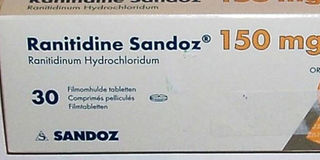Hypertension, ulcers drugs could cause cancer - NDA

Risky drugs. Drug authorities across the globe first became aware of the presence of the nitrosamine impurity in drugs in July 2018, according to WHO. FILE PHOTO
What you need to know:
- World Health Organisation (WHO), however, advises the authorities to “verify the levels of nitrosamine in the products on their markets, whether using national testing laboratories or self-declarations from the suppliers .”
The National Drug Authority (NDA) has said two important drugs, Ranitidine and Angiotensin II receptor blockers, may be having nitrosamine, an impurity that causes cancer.
Ranitidine is used to treat patients with ulcers, and Angiotensin II receptor blockers are used in the hypertensives.
Although still poorly reported in the country, side effects of drugs continue to leave a huge burden on consumers, amid cases of deaths, according to drug safety reports from the NDA.
First detected in important drugs across the globe in 2018, eliminating the deadly impurity, nitrosamine, has remained a challenge to global drug authorities and manufacturers.
The global drug authorities, including NDA, are emphasising on minimising the level of daily intake of drugs that have the impurity.
In a circular released by the authority on June 24, the NDA said the drugs are being voluntarily recalled by the respective manufacturers [names not specified] and that tests for impurities will be required for the drugs suspected to have the impurity effective August 1.
“NDA has noted that some drugs including Ranitidine and Angiotensin II receptor blockers may contain nitrosamine impurities including nitrosodimethylamine (NDMA),” the authority wrote.
“NDMA is classified as a probable human carcinogen –a substance that could cause cancer, following exposure over time based on results from laboratory tests,” the circular undersigned by Mr David Nahamya, the secretary to the Authority, read.
Last year in October, the NDA also sounded the alarm about one of the drugs having impurities but Daily Monitor could not establish what actions were taken.
“All manufacturers of drugs with potential for nitrosamine impurities will be required to establish specifications and validated test methods for these impurities and carry out laboratory testing for confirmation of these impurities in the finished drug product to acceptable levels,” the NDA said.
WHO says
World Health Organisation (WHO), however, advises the authorities to “verify the levels of nitrosamine in the products on their markets, whether using national testing laboratories or self-declarations from the suppliers .”
WHO also says the authorities should request manufacturers to undertake risk assessments to identify the causes of nitrosamine contamination and put in place limits to ensure control of such impurities below acceptable levels.
The allowable intake levels of the drugs is 96 nanogram per day, according to WHO.
Drug authorities across the globe first became aware of the presence of the nitrosamine impurity in drugs in July 2018, according to WHO.
However, the exact way the impurities get into the drugs are still unclear.
Although some experts think the possibility for nitrosamine impurity content was due to emergence of substances called nitrites and amines during the manufacturing processes, WHO thinks it is more.
“Evidence suggests that sources of nitrites or amines are unintentional contaminants of starting materials [for manufacturing the drugs], reagents and solvents [used during the processes],” WHO says.




